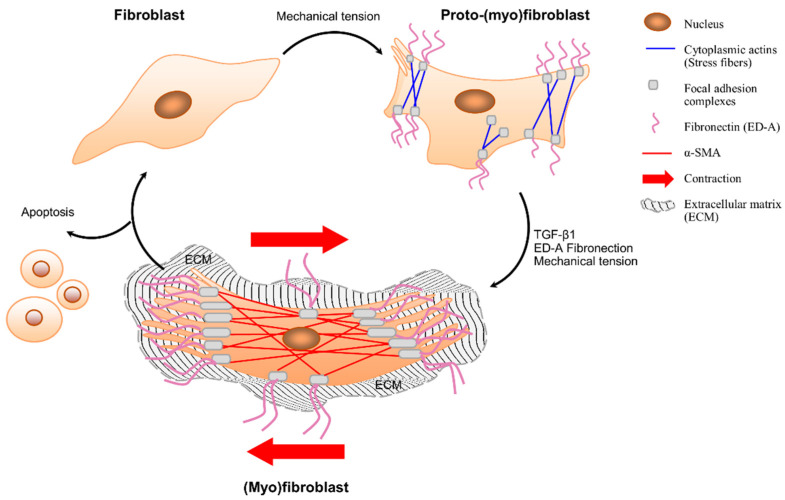Figure 3.
Fibroblast–(myo)fibroblast transition. Fibroblasts do not contain stress fibers or form adhesion complexes with their extracellular matrix. Fibroblasts become activated by mechanical stress and/or cytokine release and differentiate into “proto-(myo)fibroblasts” that form cytoplasmic actin-containing fibers, cell-matrix connections, and fibronectin—including ED-A splice variant (at the cell surface). Proto-(myo)fibroblasts can form contractile forces. In the presence of mechanical stress, TGF-β1 and ED-A promote the transition of proto-(myo)fibroblasts to (myo)fibroblasts, which express α-SMA, larger cell-matrix connections, and extensively develop stress fibers. (Myo)fibroblasts produce ECM and have the ability to contract the surrounding tissue. (Myo)fibroblasts are cleared by apoptosis or may return to a quiescent fibroblastic phenotype after deactivation.

